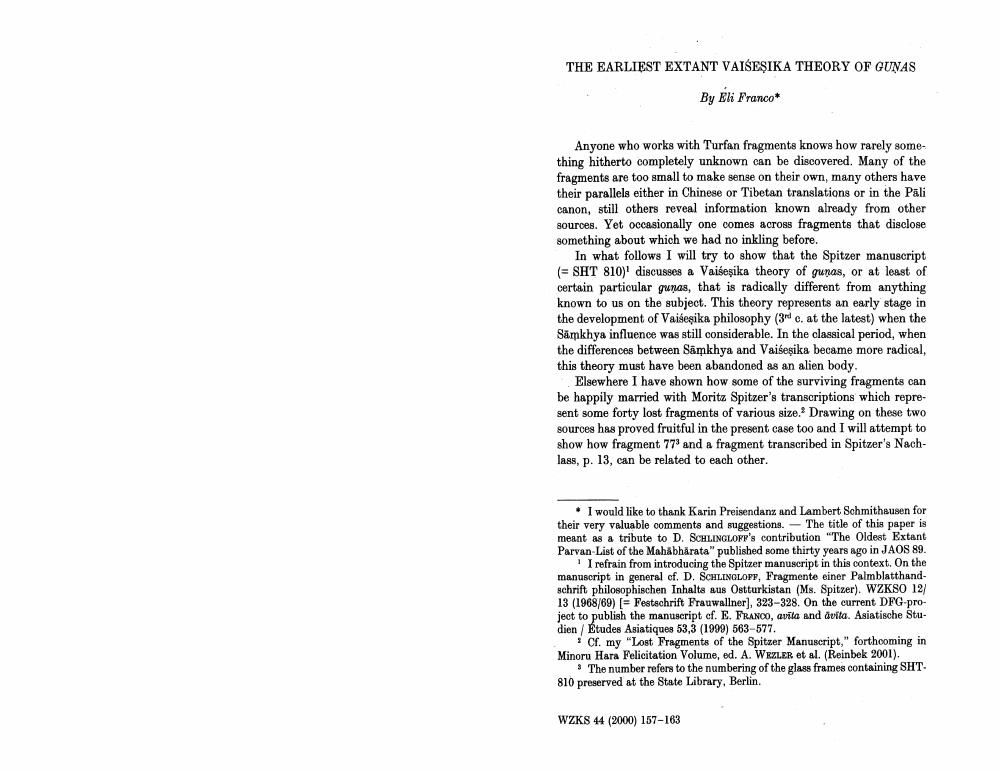Book Title: Earliest Extant Vaisesika Theory Of Gunas Author(s): Eli Franco Publisher: Eli Franco View full book textPage 1
________________ THE EARLIEST EXTANT VAIŠEŞIKA THEORY OF GUNAS By Eli Franco* Anyone who works with Turfan fragments knows how rarely something hitherto completely unknown can be discovered. Many of the fragments are too small to make sense on their own, many others have their parallels either in Chinese or Tibetan translations or in the Pali canon, still others reveal information known already from other sources. Yet occasionally one comes across fragments that disclose something about which we had no inkling before. In what follows I will try to show that the Spitzer manuscript (=SHT 810)' discusses a Vaisesika theory of gunas, or at least of certain particular gunas, that is radically different from anything known to us on the subject. This theory represents an early stage in the development of Vai esika philosophy (3rd c. at the latest) when the Samkhya influence was still considerable. In the classical period, when the differences between Samkhya and Vaibesika became more radical, this theory must have been abandoned as an alien body. Elsewhere I have shown how some of the surviving fragments can be happily married with Moritz Spitzer's transcriptions which represent some forty lost fragments of various size. Drawing on these two sources has proved fruitful in the present case too and I will attempt to show how fragment 77' and a fragment transcribed in Spitzer's Nachlass, p. 13, can be related to each other . I would like to thank Karin Preisendanz and Lambert Schmithsusen for their very valuable comments and suggestions. The title of this paper is meant as a tribute to D. SCHLINGLONY's contribution "The Oldest Extant Parvan-List of the Mahabharata" published some thirty years ago in JAOS 89. II refrain from introducing the Spitzer manuscript in this context. On the manuscript in general cf. D. SCHLINGLOPY, Fragmente einer Palmblatthandschrift philosophischen Inhalte aus Ostturkistan (Ms. Spitzer). WZKSO 12/ 13 (1968/69) (= Festschrift Frauwallner), 323-328. On the current DFG.project to publish the manuscript of. E. FRANCO, avila and avita. Asiatische Studien / Etudes Asiatiques 53,3 (1999) 563-577. Cf my "Lost Fragments of the Spitzer Manuscript," forthcoming in Minoru Hara Felicitation Volume, ed. A. WEZLER et al. (Reinbek 2001). The number refers to the numbering of the glass frames containing SHT810 preserved at the State Library, Berlin. WZKS 44 (2000) 157-163Page Navigation
1 2 3 4 5
